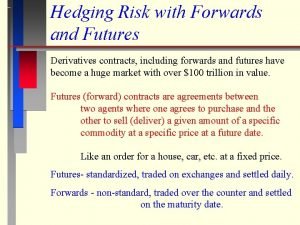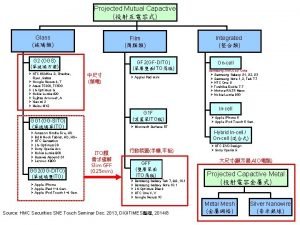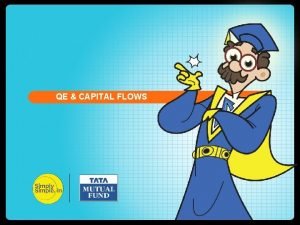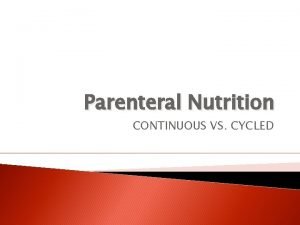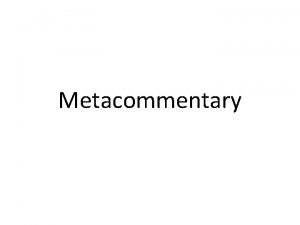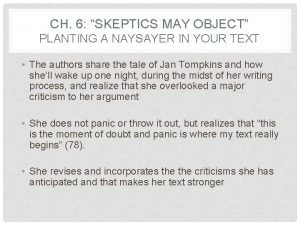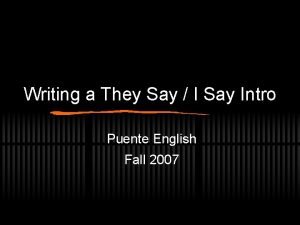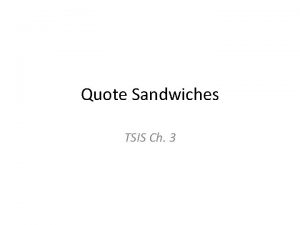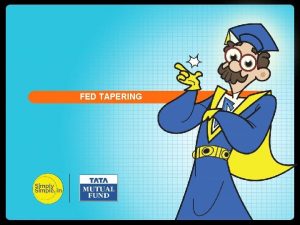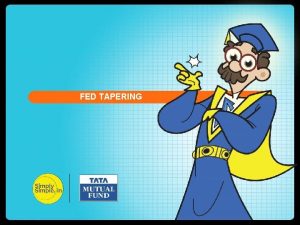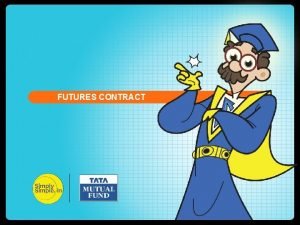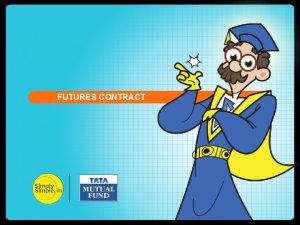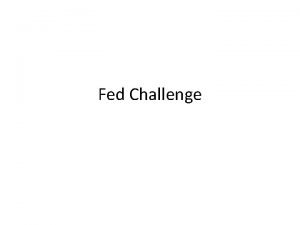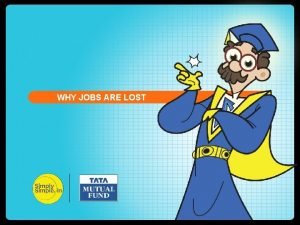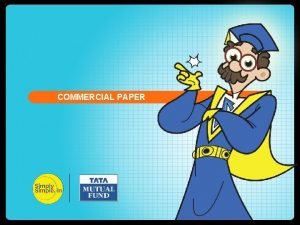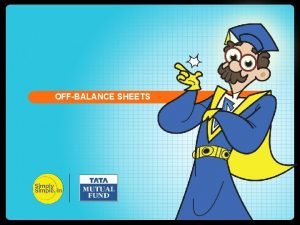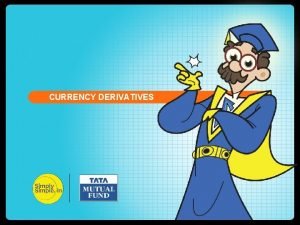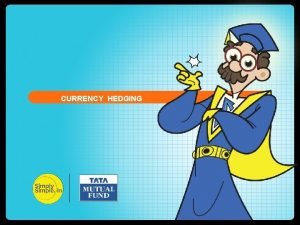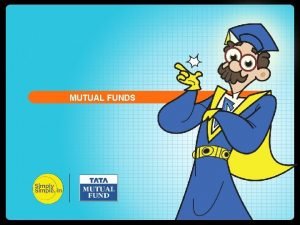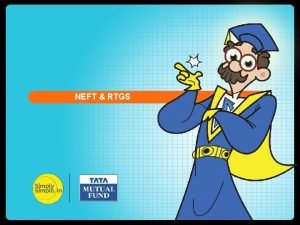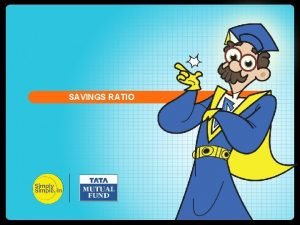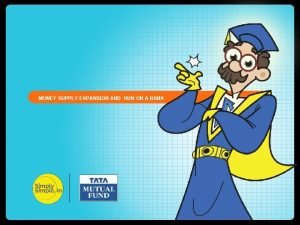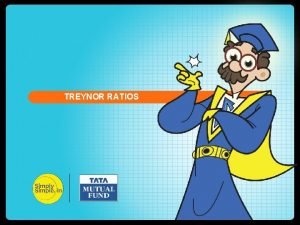FED TAPERING OPTIONS Presenting Options OPTIONS Lets say























- Slides: 23

FED TAPERING OPTIONS

Presenting “Options”

OPTIONS Lets say there’s a farmer who cultivates wheat

OPTIONS And a baker who needs wheat as an input for making bread

OPTIONS q The farmer thinks that the price of wheat which is currently trading at Rs. 100 could fall to Rs. 90 in 3 months q The baker on the other hand feels that the price of wheat on the other hand might become Rs. 120 in 3 months

OPTIONS q In such a case both of them get together and sign a contract which says that at the end of 3 months the farmer would sell wheat to the at Rs. 110 q Thus the farmer is protected against possible fall in prices q And the baker is protected against the price of wheat going beyond Rs. 110

OPTIONS Such a contract is called a Futures contract

OPTIONS In a Futures contract both parties are obliged to honor the contract and there is no escape route for either party

OPTIONS But what if the contract gives the farmer the “option” of either q Selling his produce to the baker at the pre-agreed price of Rs 110 or q Choosing to exit the contract and selling the produce in the open market or wherever he deems fit. Thus, he would not be obliged to honor the contract made with the baker on the date of settlement.

OPTIONS Such a contract which gives the farmer the option of either executing the contract or exiting it is known as an “Options” contract But the farmer obviously cannot get this privilege just like that. He obviously has to pay a premium for exercising this facility

OPTIONS Now, let’s say that after 3 months the price of wheat reaches Rs. 120 In this case the farmer quite obviously will want to exit the contract so that he is free to sell his produce in the open market for Rs. 120. Thus while the farmer gets away the baker is left high and dry and has no other option but to buy from the open market at Rs 120

OPTIONS But it is not such a bad situation for the baker as it appears as he gets compensated by the farmer for having been a party to the “Options” contract. This compensation * in the form of price is called the “Option premium” that the farmer has to pay for the Options contract and quite evidently it would be a small amount. Let’s say in our case the amount is Rs 2. So the farmer is obliged to pay the baker Rs 2 as he has chosen to opt out of the contract.

OPTIONS Thus although the baker has no other option left but to go to the open market and purchase wheat at Rs. 120, he does get the benefit of Rs 2 as compensation for being a party to the “Options” contract. So even if the price is Rs. 120 in the open market, for him the effective price turns out to be Rs. (120 -2) = Rs 118. So by simply participating in the contract he too stands togain something

OPTIONS As far as the farmer is concerned it is a win – win scenario for him by participating in the contract. Had the prices fallen to Rs 90 as he had anticipated he would have executed the Options contract. But since prices rose to Rs 120 he chose to exit the contract. Thus he is blessed with the “Option” by signing such a contract.

OPTIONS It is important to understand that in an “Options” contract only one party gets the privilege to exercise the option while the other party is obliged to honor the option chosen. Thus in our case the farmer has the option to either execute or exit the contract whereas the baker is obliged to honor the decision of the farmer. A contract such as this where only the seller of the commodity gets the option to either exercise or exit the contract is known as “Put” option.

OPTIONS There is another option which is called a “Call” option and we will explain that concept to you in our next lesson

OPTIONS q Even in an Options contract both parties land up achieving their goals and their interest is protected q The farmer stands to gain the most by getting to exercise a choice that benefits him the most q The baker too benefits by being a party to the contract due to the compensation he receives from the farmer for not honoring the contract.

OPTIONS q The baker due to the compensation receives wheat from the open market at an effective price of Rs 118 q And hence is better off than the ordinary or spot buyer who would have to pay Rs 120.

OPTIONS Thus in a sense both parties landed up getting some gains by being parties to the “options contract”. However unlike in a “Futures” contract, in the “Options” contract one party gains more than the other party.

OPTIONS q I hope I have been able to explain to you what ‘margin money’ is all about. q Do give me your feedback about my lessons so that I can work on them and improve them for your better comprehension.

OPTIONS Please do let me know if I have managed to clear this concept for you. Your feedback is very important to me as it helps me plan my future lessons.

Please give your feedback at professor@tataamc. com

DISCLAIMER The views expressed in this lesson are for information purposes only and do not construe to be any investment, legal or taxation advice. The lesson is a conceptual representation and may not include several nuances that are associated and vital. The purpose of this lesson is to clarify the basics of the concept so that readers at large can relate and thereby take more interest in the product / concept. In a nutshell, Professor Simply Simple lessons should be seen from the perspective of it being a primer on financial concepts. The contents are topical in nature and held true at the time of creation of the lesson. This is not indicative of future market trends, nor is Tata Asset Management Ltd. attempting to predict the same. Reprinting any part of this material will be at your own risk. Tata Asset Management Ltd. will not be liable for the consequences of such action. Mutual Fund investments are subject to market risks, read all scheme related documents carefully.
 Forwards hedging
Forwards hedging Tapering fed
Tapering fed Tapering qe
Tapering qe Spiral angle of bur
Spiral angle of bur Tpn cycling
Tpn cycling Let just kiss and say goodbye
Let just kiss and say goodbye They say i say chapter 10
They say i say chapter 10 They say i say format
They say i say format What do you say after you say hello
What do you say after you say hello Naysayer template
Naysayer template Gerald graff they say i say
Gerald graff they say i say How do you say puente in english
How do you say puente in english They say / i say paragraph examples
They say / i say paragraph examples They say i say
They say i say As he himself puts it the art of quoting summary
As he himself puts it the art of quoting summary They say i say essay format
They say i say essay format Some say the world will end in fire some say in ice
Some say the world will end in fire some say in ice Voice markers they say i say
Voice markers they say i say They say i say counter argument templates
They say i say counter argument templates Movqesiz say sistemleri
Movqesiz say sistemleri It's not what you say it's how you say it
It's not what you say it's how you say it Some say the world will end in fire some say in ice
Some say the world will end in fire some say in ice Quotation sandwich they say i say
Quotation sandwich they say i say They say i say chapter 2
They say i say chapter 2
